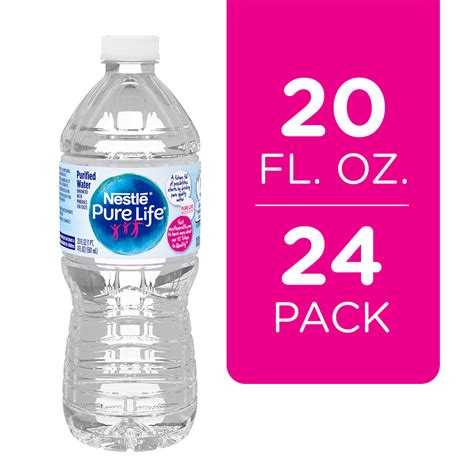How Much Is 20 Ounces Of Water
Kalali
Mar 28, 2025 · 4 min read

Table of Contents
How Much is 20 Ounces of Water? A Comprehensive Guide
Knowing how much 20 ounces of water is can be surprisingly useful in various situations. Whether you're tracking your daily hydration, planning a hiking trip, or simply understanding portion sizes, grasping this measurement is key. This comprehensive guide will explore the quantity of 20 ounces of water in different contexts, helping you visualize and understand this common measurement.
Visualizing 20 Ounces of Water: More Than You Think
20 ounces of water might seem like a small amount initially, but it's more substantial than you might imagine. To help visualize this quantity, consider these comparisons:
Comparing 20 Ounces to Common Containers:
- Standard Water Bottles: Many standard water bottles hold 16 or 24 ounces. Therefore, 20 ounces falls comfortably between these two common sizes. Think of it as slightly more than a standard 16-ounce bottle.
- Soda Bottles: Standard 20-ounce soda bottles provide an excellent visual representation. If you've held one of these, you have a good understanding of the volume of 20 ounces of water.
- Mugs and Cups: The volume of 20 ounces would fill a sizable mug or several standard-sized cups, depending on their capacity.
Understanding Volume in Different Units:
While ounces are common in the US, other units are used globally. Understanding the conversion is important for broader comprehension:
- Metric System: 20 fluid ounces is approximately equal to 591 milliliters (ml) or 0.591 liters (L). This might be easier to visualize for those accustomed to the metric system.
- Cups: 20 fluid ounces is equivalent to approximately 2.5 cups (assuming a standard 8-ounce cup). This is useful for recipes and everyday cooking.
- Pints: 20 fluid ounces is equal to 2.5 pints.
- Quarts: 20 fluid ounces is equivalent to 1.25 quarts.
The Importance of 20 Ounces of Water in Daily Life
Understanding the volume of 20 ounces of water is crucial for several daily activities:
Hydration Goals:
Many health professionals recommend consuming at least 64 ounces of water per day, and some suggest even more depending on activity levels and climate. 20 ounces represents a significant portion of this daily intake. Tracking your water consumption using 20-ounce increments can be an effective strategy to ensure adequate hydration.
Sports and Fitness:
Athletes and fitness enthusiasts often pay close attention to their fluid intake. 20 ounces of water may be consumed before, during, or after workouts to maintain optimal hydration and performance. The importance of staying hydrated cannot be overstated, especially during strenuous activity.
Cooking and Baking:
Many recipes call for specific amounts of water, often in ounces. Accurately measuring 20 ounces of water ensures that your recipe turns out as intended.
Travel and Outdoor Activities:
When packing for a hike, camping trip, or other outdoor adventure, knowing how much 20 ounces of water is will help you plan appropriately. It's crucial to carry enough water to stay hydrated, especially in hot or strenuous conditions.
Practical Applications of Understanding 20 Ounces:
Let's explore some practical scenarios where knowing the volume of 20 ounces is beneficial:
Meal Prepping:
Knowing the volume of 20 ounces can be helpful when prepping meals or drinks ahead of time. For example, you might prepare a large batch of infused water or a protein shake, accurately measuring 20 ounces of water for each serving.
Portion Control:
If you're trying to manage your calorie intake, understanding portion sizes is vital. Using a 20-ounce container for soups, stews, or other liquid-based meals can help with portion control.
Medication:
Some medications require mixing with a specific amount of water. Accurately measuring 20 ounces ensures the correct concentration.
Home Improvement:
In some DIY projects, accurate measurements of water are needed for mixing cement, paints, or other materials. A 20-ounce measurement is a handy amount for many smaller tasks.
Beyond the Basics: Factors Affecting Water Consumption
While 20 ounces of water provides a tangible reference point, several factors influence individual water requirements:
Activity Level:
Highly active individuals need to consume more water than those with sedentary lifestyles. The increased sweating associated with exercise necessitates replacing lost fluids.
Climate:
Hot and humid climates lead to higher rates of perspiration. Therefore, people living in these areas need to increase their water intake to compensate for fluid loss.
Health Conditions:
Certain health conditions can affect fluid balance. Consulting with a doctor or healthcare professional is crucial to determine appropriate hydration levels for individuals with specific health concerns.
Medications:
Some medications can affect fluid balance, influencing the amount of water a person needs to consume.
Conclusion: Mastering the 20-Ounce Measurement
Understanding the volume of 20 ounces of water is a valuable skill with broad applicability. Whether you're tracking your daily hydration, following recipes, or planning an outdoor adventure, grasping this measurement improves your efficiency and planning. By understanding its visual representation and conversion to other units, you gain a greater understanding of fluid volumes and their importance in daily life. Remember to adjust your water intake based on your individual needs, factoring in activity levels, climate, health conditions, and any medications you take. Staying adequately hydrated is crucial for overall health and well-being. And now, armed with your newfound knowledge of 20 ounces, you're well-equipped to manage your hydration effectively.
Latest Posts
Latest Posts
-
Lines Of Symmetry Of A Hexagon
Mar 31, 2025
-
16 Celsius Is What In Fahrenheit
Mar 31, 2025
-
What Is A Bird That Is A Carnivore
Mar 31, 2025
-
Cuanto Es El 10 De 3000
Mar 31, 2025
-
4 3 As A Mixed Number
Mar 31, 2025
Related Post
Thank you for visiting our website which covers about How Much Is 20 Ounces Of Water . We hope the information provided has been useful to you. Feel free to contact us if you have any questions or need further assistance. See you next time and don't miss to bookmark.
